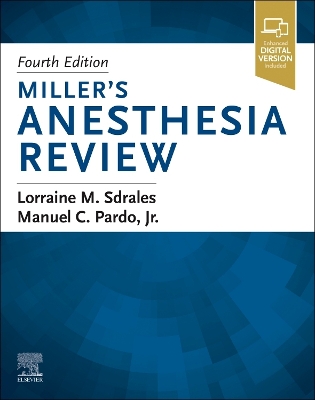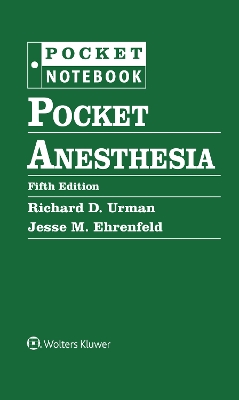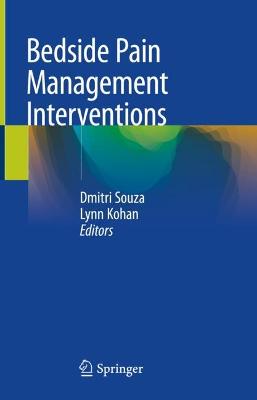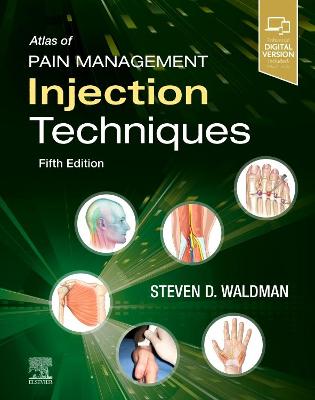Miller's Basics of Anesthesia
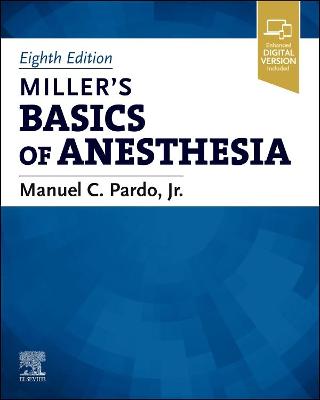 -10%
portes grátis
-10%
portes grátis
Miller's Basics of Anesthesia
Pardo, Manuel
Elsevier - Health Sciences Division
09/2022
944
Dura
Inglês
9780323796774
15 a 20 dias
450
Descrição não disponível.
SECTION I INTRODUCTION
1. Scope of Anesthesia Practice
2. Learning Anesthesia
3. Anesthesia Information Systems
SECTION II PHARMACOLOGY AND PHYSIOLOGY
4. Basic Pharmacologic Principles
5. Clinical Cardiac and Pulmonary Physiology
6. Autonomic Nervous System
7. Inhaled Anesthetics
8. Intravenous Anesthetics
9. Opioids
10. Local Anesthetics
11. Neuromuscular Blocking Drugs
12. Anesthesia Neurotoxicity
SECTION III PREOPERATIVE PREPARATION AND INTRAOPERATIVE MANAGEMENT
13. Preoperative Evaluation and Medication
14. Choice of Anesthetic Technique
15. Anesthesia Delivery Systems
16. Airway Management
17. Spinal, Epidural, and Caudal Anesthesia
18. Peripheral Nerve Blocks
19. Positioning and Associated Risks
20. Anesthetic Monitoring
21. Acid-Base Balance and Blood Gas Analysis
22. Hemostasis
23. Fluid Management
24. Blood Therapy
SECTION IV SPECIAL ANESTHETIC CONSIDERATIONS
25. Cardiovascular Disease
26. Congenital Heart Disease
27. Chronic Pulmonary Disease
28. Renal, Liver, and Biliary Tract Disease
29. Nutritional, Gastrointestinal, and Endocrine Disease
30. Central Nervous System Disease
31. Ophthalmology and Otolaryngology
32. Orthopedics
33. Obstetrics
34. Pediatrics
35. Elderly Patients
36. Organ Transplantation
37. Outpatient Surgery
38. Anesthesia for Procedures in Non-Operating Room Locations
SECTION V THE RECOVERY PERIOD
39. Postanesthesia Recovery
40. Perioperative Pain Management
SECTION VI CONSULTANT ANESTHETIC PRACTICE
41. Critical Care Medicine
42. Anesthesia for Trauma
43. Natural and Human-induced Disasters
44. Chronic Pain Management
45. Cardiopulmonary Resuscitation
46. Operating Room Management
47. Awareness under Anesthesia
48. Quality and Patient Safety
49. Palliative Care
50. Sleep Medicine
51. Perioperative Surgical Home
APPENDICES
Basic Standards for Preanesthesia Care
Standards for Basic Anesthetic Monitoring
Standards for Postanesthesia Care
1. Scope of Anesthesia Practice
2. Learning Anesthesia
3. Anesthesia Information Systems
SECTION II PHARMACOLOGY AND PHYSIOLOGY
4. Basic Pharmacologic Principles
5. Clinical Cardiac and Pulmonary Physiology
6. Autonomic Nervous System
7. Inhaled Anesthetics
8. Intravenous Anesthetics
9. Opioids
10. Local Anesthetics
11. Neuromuscular Blocking Drugs
12. Anesthesia Neurotoxicity
SECTION III PREOPERATIVE PREPARATION AND INTRAOPERATIVE MANAGEMENT
13. Preoperative Evaluation and Medication
14. Choice of Anesthetic Technique
15. Anesthesia Delivery Systems
16. Airway Management
17. Spinal, Epidural, and Caudal Anesthesia
18. Peripheral Nerve Blocks
19. Positioning and Associated Risks
20. Anesthetic Monitoring
21. Acid-Base Balance and Blood Gas Analysis
22. Hemostasis
23. Fluid Management
24. Blood Therapy
SECTION IV SPECIAL ANESTHETIC CONSIDERATIONS
25. Cardiovascular Disease
26. Congenital Heart Disease
27. Chronic Pulmonary Disease
28. Renal, Liver, and Biliary Tract Disease
29. Nutritional, Gastrointestinal, and Endocrine Disease
30. Central Nervous System Disease
31. Ophthalmology and Otolaryngology
32. Orthopedics
33. Obstetrics
34. Pediatrics
35. Elderly Patients
36. Organ Transplantation
37. Outpatient Surgery
38. Anesthesia for Procedures in Non-Operating Room Locations
SECTION V THE RECOVERY PERIOD
39. Postanesthesia Recovery
40. Perioperative Pain Management
SECTION VI CONSULTANT ANESTHETIC PRACTICE
41. Critical Care Medicine
42. Anesthesia for Trauma
43. Natural and Human-induced Disasters
44. Chronic Pain Management
45. Cardiopulmonary Resuscitation
46. Operating Room Management
47. Awareness under Anesthesia
48. Quality and Patient Safety
49. Palliative Care
50. Sleep Medicine
51. Perioperative Surgical Home
APPENDICES
Basic Standards for Preanesthesia Care
Standards for Basic Anesthetic Monitoring
Standards for Postanesthesia Care
Este título pertence ao(s) assunto(s) indicados(s). Para ver outros títulos clique no assunto desejado.
SECTION I INTRODUCTION
1. Scope of Anesthesia Practice
2. Learning Anesthesia
3. Anesthesia Information Systems
SECTION II PHARMACOLOGY AND PHYSIOLOGY
4. Basic Pharmacologic Principles
5. Clinical Cardiac and Pulmonary Physiology
6. Autonomic Nervous System
7. Inhaled Anesthetics
8. Intravenous Anesthetics
9. Opioids
10. Local Anesthetics
11. Neuromuscular Blocking Drugs
12. Anesthesia Neurotoxicity
SECTION III PREOPERATIVE PREPARATION AND INTRAOPERATIVE MANAGEMENT
13. Preoperative Evaluation and Medication
14. Choice of Anesthetic Technique
15. Anesthesia Delivery Systems
16. Airway Management
17. Spinal, Epidural, and Caudal Anesthesia
18. Peripheral Nerve Blocks
19. Positioning and Associated Risks
20. Anesthetic Monitoring
21. Acid-Base Balance and Blood Gas Analysis
22. Hemostasis
23. Fluid Management
24. Blood Therapy
SECTION IV SPECIAL ANESTHETIC CONSIDERATIONS
25. Cardiovascular Disease
26. Congenital Heart Disease
27. Chronic Pulmonary Disease
28. Renal, Liver, and Biliary Tract Disease
29. Nutritional, Gastrointestinal, and Endocrine Disease
30. Central Nervous System Disease
31. Ophthalmology and Otolaryngology
32. Orthopedics
33. Obstetrics
34. Pediatrics
35. Elderly Patients
36. Organ Transplantation
37. Outpatient Surgery
38. Anesthesia for Procedures in Non-Operating Room Locations
SECTION V THE RECOVERY PERIOD
39. Postanesthesia Recovery
40. Perioperative Pain Management
SECTION VI CONSULTANT ANESTHETIC PRACTICE
41. Critical Care Medicine
42. Anesthesia for Trauma
43. Natural and Human-induced Disasters
44. Chronic Pain Management
45. Cardiopulmonary Resuscitation
46. Operating Room Management
47. Awareness under Anesthesia
48. Quality and Patient Safety
49. Palliative Care
50. Sleep Medicine
51. Perioperative Surgical Home
APPENDICES
Basic Standards for Preanesthesia Care
Standards for Basic Anesthetic Monitoring
Standards for Postanesthesia Care
1. Scope of Anesthesia Practice
2. Learning Anesthesia
3. Anesthesia Information Systems
SECTION II PHARMACOLOGY AND PHYSIOLOGY
4. Basic Pharmacologic Principles
5. Clinical Cardiac and Pulmonary Physiology
6. Autonomic Nervous System
7. Inhaled Anesthetics
8. Intravenous Anesthetics
9. Opioids
10. Local Anesthetics
11. Neuromuscular Blocking Drugs
12. Anesthesia Neurotoxicity
SECTION III PREOPERATIVE PREPARATION AND INTRAOPERATIVE MANAGEMENT
13. Preoperative Evaluation and Medication
14. Choice of Anesthetic Technique
15. Anesthesia Delivery Systems
16. Airway Management
17. Spinal, Epidural, and Caudal Anesthesia
18. Peripheral Nerve Blocks
19. Positioning and Associated Risks
20. Anesthetic Monitoring
21. Acid-Base Balance and Blood Gas Analysis
22. Hemostasis
23. Fluid Management
24. Blood Therapy
SECTION IV SPECIAL ANESTHETIC CONSIDERATIONS
25. Cardiovascular Disease
26. Congenital Heart Disease
27. Chronic Pulmonary Disease
28. Renal, Liver, and Biliary Tract Disease
29. Nutritional, Gastrointestinal, and Endocrine Disease
30. Central Nervous System Disease
31. Ophthalmology and Otolaryngology
32. Orthopedics
33. Obstetrics
34. Pediatrics
35. Elderly Patients
36. Organ Transplantation
37. Outpatient Surgery
38. Anesthesia for Procedures in Non-Operating Room Locations
SECTION V THE RECOVERY PERIOD
39. Postanesthesia Recovery
40. Perioperative Pain Management
SECTION VI CONSULTANT ANESTHETIC PRACTICE
41. Critical Care Medicine
42. Anesthesia for Trauma
43. Natural and Human-induced Disasters
44. Chronic Pain Management
45. Cardiopulmonary Resuscitation
46. Operating Room Management
47. Awareness under Anesthesia
48. Quality and Patient Safety
49. Palliative Care
50. Sleep Medicine
51. Perioperative Surgical Home
APPENDICES
Basic Standards for Preanesthesia Care
Standards for Basic Anesthetic Monitoring
Standards for Postanesthesia Care
Este título pertence ao(s) assunto(s) indicados(s). Para ver outros títulos clique no assunto desejado.


